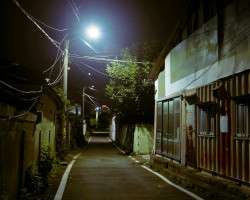
February 15, 2015
The Last Goodbye
The unique and moving experience of funerals in Japan
I always knew if I stayed in Japan long enough, I’d start going to my friends’ funerals. I dreaded that last goodbye, but now it’s started happening. I’ve compared the funerals here with the ones I’ve seen elsewhere—and I’ve learned something.
Not long ago in Canada, I went to “a celebration of a life.” In a hall, we watched a slideshow with photos of our dead friend and a soundtrack of his favorite songs. His best friends made some touching, even funny speeches. At the reception, everyone seemed appreciative—even upbeat.
Strangely, we never saw a body or even an urn—our friend might well have been gone on a long holiday. I felt cheated; we never confronted our grief at losing him.
In Japan, a funeral, often referred to as a sōshiki, is a much bigger deal, consisting of two main parts: The tsuya, or “wake,” and the kokubetsushiki, or the actual funeral service. There’s a lot more honesty about death, too.
The first friend’s tsuya was held in a temple. We signed a guest book and presented envelopes with our condolence money. In the front of a room, the dead man lay behind a floral display and a portrait. A Buddhist priest chanted a sutra. Solemnly, each of us walked to the front, lit some incense, and said a prayer. Afterward, we met with the family.
A ceremony in a temple used to be common in Japan, but as I discovered, the trend now is to hold them in a funeral hall.
The third tsuya was held in the intimacy of a private home. My colleague, in her black dress, served as the moshu, or chief mourner, and answered the door. She ushered me into the living room where several people sat, eating and drinking. Nearby, resting on a trestle, lay the coffin with our dead friend.
“Would you like to see her?” my colleague asked.
A panel in the coffin was opened for me and I shuffled over. A little uncomfortably, I looked inside. She had always taken great pains about her appearance. Now, she had no makeup. Her eyelids had been closed. Her skin appeared jaundiced and waxy.
Over a beer, the other mourners and I reminisced about the departed as we sat in her room amid her furniture, books and paintings. The evening wore on and more guests arrived. Her brother even made some racy jokes about her. It became a little like a celebrity roast.
Still, the honesty of that homestyle event has stayed with me. Laying out the dead at home for friends and family to visit was once common in Japan. In Britain and in North America, a “wake” was also once a familiar part of life.
Recently, a friend at work died unexpectedly. His wife called; he had never woken up that morning. Stunned, we realized that never again would we laugh at his bad jokes or see him in his big, colorful neckties. And we could never tell him how much we liked him.
The night of his tsuya, his open coffin lay among several huge bouquets at the front of the small church he attended. During the service, the minister recalled that he liked to eat and to drink a little too much. I smiled, thinking of those times. Our friend’s wife and daughter came up. In tears, they talked about a man who always tried his best. Many in the church, including me, began weeping, too.
On the following afternoon, the kokubetsushiki (funeral ceremony) was held in the church for the family and his close friends. After that came a scene that happens in most Japanese funerals. The ushers moved quickly among the floral displays, snipping off the flowers.
We took those flowers and dropped them into his black coffin. His daughter added her teddy bear and his favorite necktie. Someone nailed the lid shut.
To my surprise, the ushers asked me to help carry the coffin to the hearse, a final service for a dear friend. The box seemed heavy in my arms. We stumbled a little on the steps outside. The phrase came to my mind, “a dead weight.”
Then we slid it into the shiny black hearse. The driver pressed a lever, prompting a clamp to spring up and lock the coffin in place. The family got into the car, which drove them to the crematorium and one last viewing.
Some people find it grisly that after the cremation in Japan the immediate family, even young children, pick up the bones with chopsticks and transfer them into an urn.
I think funerals in Japan are done right. Death should be shocking and emotional. That’s what grief is about—letting go. There’s comfort in sharing.
Funerals in Japan remind us that, despite smartphones and cloud storage, life is fleeting. Worth remembering before that last goodbye is a Buddhist saying, “ichigo ichie”—in this context, “a once-in-a-lifetime encounter.” Each meeting with those we love is to be cherished; losing them should be properly mourned.







